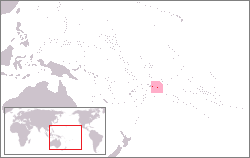List of non-marine molluscs of American Samoa facts for kids
The beautiful islands of American Samoa are home to many unique creatures, including a special group of animals called non-marine molluscs. These are creatures like snails and slugs that live on land or in freshwater, not in the ocean. They are an important part of the fauna of American Samoa, which means all the animals living there.
What Are Molluscs?
Molluscs are a very diverse group of animals. They usually have soft bodies, and many of them have a hard shell to protect themselves. Think of a snail or a clam! They are invertebrates, meaning they don't have a backbone.
There are many different types of molluscs. The ones we are talking about here are "non-marine," which means they live away from the salty ocean. In American Samoa, this mostly includes land snails and slugs.
Land Snails: Unique Residents
Land snails are a fascinating part of American Samoa's wildlife. Many of the snails found here are endemic. This means they are found only in American Samoa and nowhere else in the world! This makes them very special and important to protect.
One important family of land snails in American Samoa is the Partulidae. These are often called "tree snails" because they live on trees and plants. They are known for their beautiful, often colorful shells.
Here are some of the unique land snails found in American Samoa:
- Eua zebrina (Gould, 1847) – This snail is endemic to American Samoa.
- Samoana abbreviata (Mousson, 1869) – Also known as the Short Samoan tree snail, this species is also endemic.
- Samoana conica – Another endemic snail from the Samoana group.
- Samoana thurstoni (Cooke & Crampton, 1930) – This is another unique snail found only in American Samoa.
Another interesting land snail belongs to the family Zonitidae:
- Trochomorpha apia (Hombron & Jacquinot, 1852) – This snail is also endemic to the region.
These endemic snails are a treasure for American Samoa. Protecting their habitats, like forests and natural areas, is very important to make sure these unique species continue to thrive for future generations.
See also
- List of marine molluscs of American Samoa
- List of non-marine molluscs of the Cook Islands
- List of non-marine molluscs of Tonga
- List of non-marine molluscs of Wallis and Futuna


